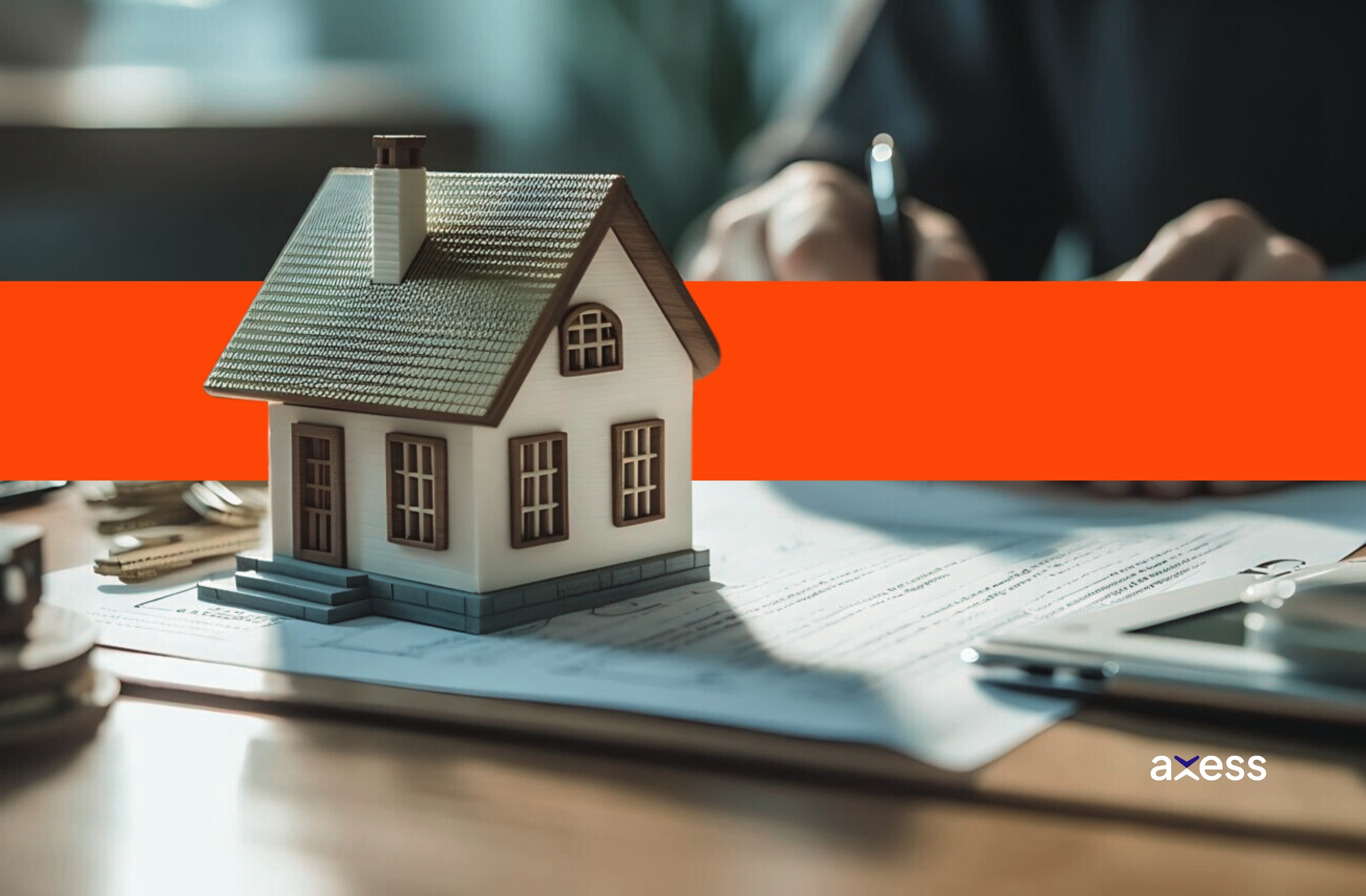Using Your Home’s Equity With a HELOC
Published on 29 August 2022, 07:22:56 AM
Borrowing against your home equity can affect mortgage refinancing.
Bet you weren’t banking on your HELOC (home equity line of credit) being payable in full when you looked for a new mortgage lender, or reopened your mortgage to change the terms.
Axess Law discharges a HELOC against mortgages you refinance, freeing you from revolving, recurring interest-only debt. We finalize second mortgages you opt to take out instead of credit lines.

What is a HELOC?
Your bank or credit union probably encouraged you to get a HELOC when you took out your mortgage.
A HELOC lets you use the equity in your home for unexpected purchases, like a new water heater, or splurges on anything your lender allows. The bank wins by placing a collateral charge (secured by your home) on your mortgage. You can take cash whenever you want it, while paying continuous interest on your growing debt.
Your HELOC can be for as much as the difference between your home’s appraised value and mortgages, or as little as the bank prefers to loan. Purchases don’t have to be for your home. You could buy that new Dodge Charger, or ski pass to your favourite winter retreat. Only you know if it’s a good investment — or if the interest you paid was worth it.
Who Qualifies
You may qualify if you:
- Have or want a low ratio mortgage (more than 20% down).
- Can show a good credit score — ask your lender what you need.
- Have ongoing, stable income.
- Your credit card or other debt is acceptable.
You can apply on your own or with a property co-owner, like your spouse, partner or a friend you have a shared mortgage with.
Mortgage Stress Test for HELOC
Like a mortgage, you’ll have to pass a stress test when you use a federally regulated lender like a bank (credit unions and private lenders are exempt). It proves you could afford to make interest payments if mortgage rates went up significantly. Your lender will use the higher of 5.25% or an interest rate you negotiate, plus 2% to calculate your risk.
How Much to Borrow
Your home can be financed for up to 80% of its value, provided you have 20% in a down payment from your own resources. Your HELOC is the amount left over after deducting any mortgages you owe.
For example, if you paid $700,000 for your home, but it’s now worth $800,000, your mortgage minus a 20% down payment would be $560,000 ($700,000 – $140,000 = $560,000).
Since your home is worth $800,000, you would potentially have an additional $100,000 to borrow against its equity. You could take the full amount or, in case your home’s value declines, part of it.
What It Costs
Setting up a HELOC can incur:
- a home appraisal to assess its value
- legal fees to register collateral charges on your home
- title search fees to check for liens
- administration fees to set up and maintain your HELOC
- life, critical illness, disability, or job loss insurance fees
- and discharge fees, if you cancel or pay out your HELOC.
Reach out to us if you have Canadian real estate law questions, including about your HELOC. (See our FAQs: questions to ask a real estate lawyer.)

Pros and Cons of Home Equity Credit Lines
Pros
- Easy credit, anytime you want it.
- Only pay interest if you use it, but rates go up when markets do.
- Lower interest than unsecured credit lines or revolving credit cards.
- No prepayment penalties.
- Replaces fixed-rate consumer loans.
- You don’t have to explain what it’s for.
Cons
- Variable rates for a HELOC can exceed your mortgage interest.
- Interest adds up over time.
- Debt grows monthly unless paid in full.
- Your HELOC has to be repaid when your home is sold or you switch lenders.
- Lenders can trigger a mortgage default if your HELOC isn’t paid.
- Lenders can reduce the maximum limit or demand instant repayment.
- Your minimum credit score suffers if interest payments aren’t made.
How to Use HELOCs
You could use a HELOC to pay off other debt, upgrade your home to increase its value and enjoyment, go to college, or invest. You can even consolidate debts with higher interest rates.
But should you?
A HELOC eventually has to be paid back — when your lender demands it, which can be without notice, or when you sell your home or switch lenders. When investments you make using a HELOC drop suddenly or home renos don’t add to your home’s value, using a HELOC just increases your long-term debts.
Other Ways to Use Your Home’s Equity
Since a HELOC can be expensive to repay, consider other ways to leverage your home’s equity.
Refinancing Your Home
If your home has gone up in value, explore refinancing with your existing lender. You can add to the value of your mortgage and use the difference to consolidate debts, buy vehicles, or make home renos — anything you want.
You may have to pay more for interest if rates have gone up, or you blend and extend your current mortgage to refinance. Lenders charge for appraisals, and you may have to pay for title searches, title insurance, and legal fees. (Ask if your lender will pay our fees — some will.)
Applying for Private Mortgages
Private mortgages are second mortgages from family, business partners, or private lenders. They cost more to set up than a HELOC, and interest rates can be as high as 18%.
Borrowers typically use second mortgages to consolidate debts using their home as equity, or to fix credit scores for future purchases. Private lenders aren’t regulated by the Government of Canada and have no stress tests.
You can qualify with a lower credit score, and if other lenders have turned you down.
Getting a Reverse Mortgage
Now your mortgages are paid in full, why not try a reverse mortgage? You can borrow back 55% of your home’s value and use it for day-to-day expenses, to buy a cottage, or give financial gifts to family.
You make no mortgage payments, and only owe your lender if you sell the house or when you die.
Why You Need a Real Estate Lawyer
What does a real estate lawyer do in Ontario? Axess Law liaises with your lender to formalize refinancing offers, including paying out a HELOC attached to any mortgages you discharge.
We can register HELOC charges on your mortgage, and check for property or financial liens. If you have Ontario real estate law questions, we have in-person or remote lawyers near you.
Take the next steps with confidence, knowing your mortgage documents are completed on time and for less than traditional law firms charge.

Affordable Real Estate Lawyers, Anywhere You Are
Access lawyers for less in Greater Toronto Area, Ottawa, or anywhere in Ontario when you buy, sell, or transfer property. Axess Law’s flat fee real estate lawyers are affordable, and our rates are all inclusive (excluding taxes, disbursements, and third-party charges). Axess Law offers you only the legal services you absolutely need. Your final invoice includes no surprises or hidden charges. Your itemized statement of adjustments is explained when we deliver it, and we answer any questions you have about it.
Find a real estate lawyer in Ontario.
Book Mortgage Appointments Online
Call our 647-479-0118 lawyer line (toll free to 1-877-402-4207), or use our convenient online booking form to make an appointment to refinance or finalize your mortgage. We’re open 7 days a week with long hours, onsite parking, and easy transit access.
Axess Law meets with you at any of our Greater Toronto Area or Ottawa law offices to sign mortgage documents. You can use our remote real estate services anywhere in Ontario. Our secure, online video conferencing services keep your information private, and our virtual real estate lawyers can witness documents online at times convenient for you.





